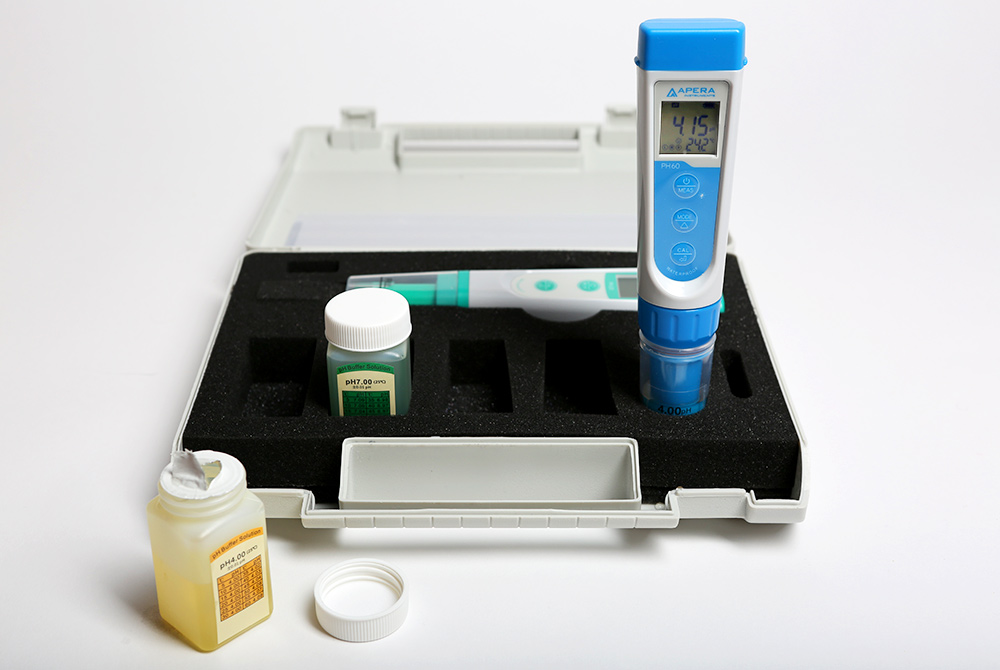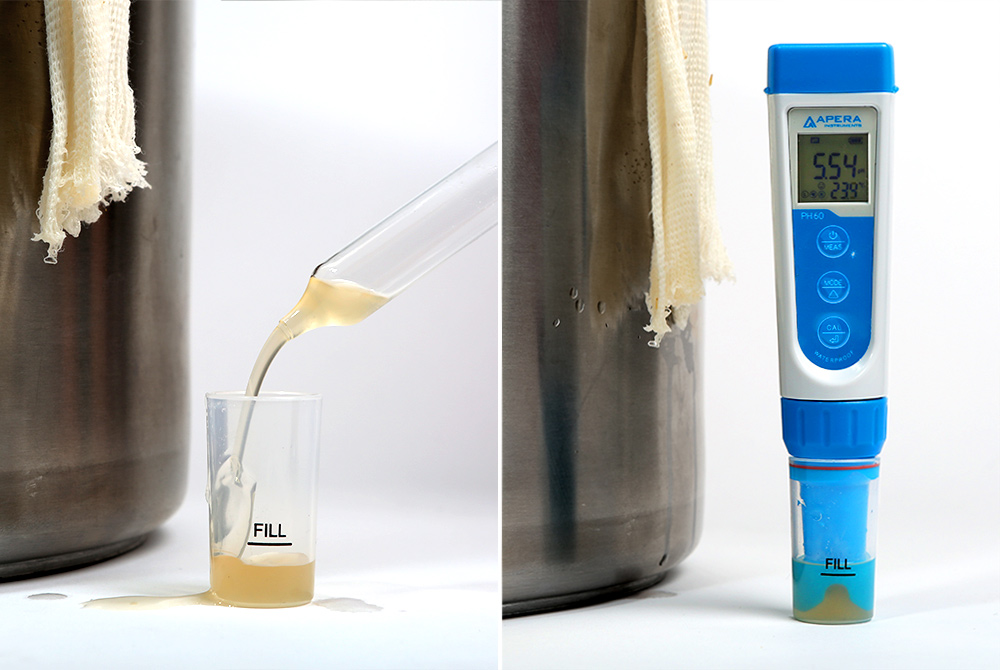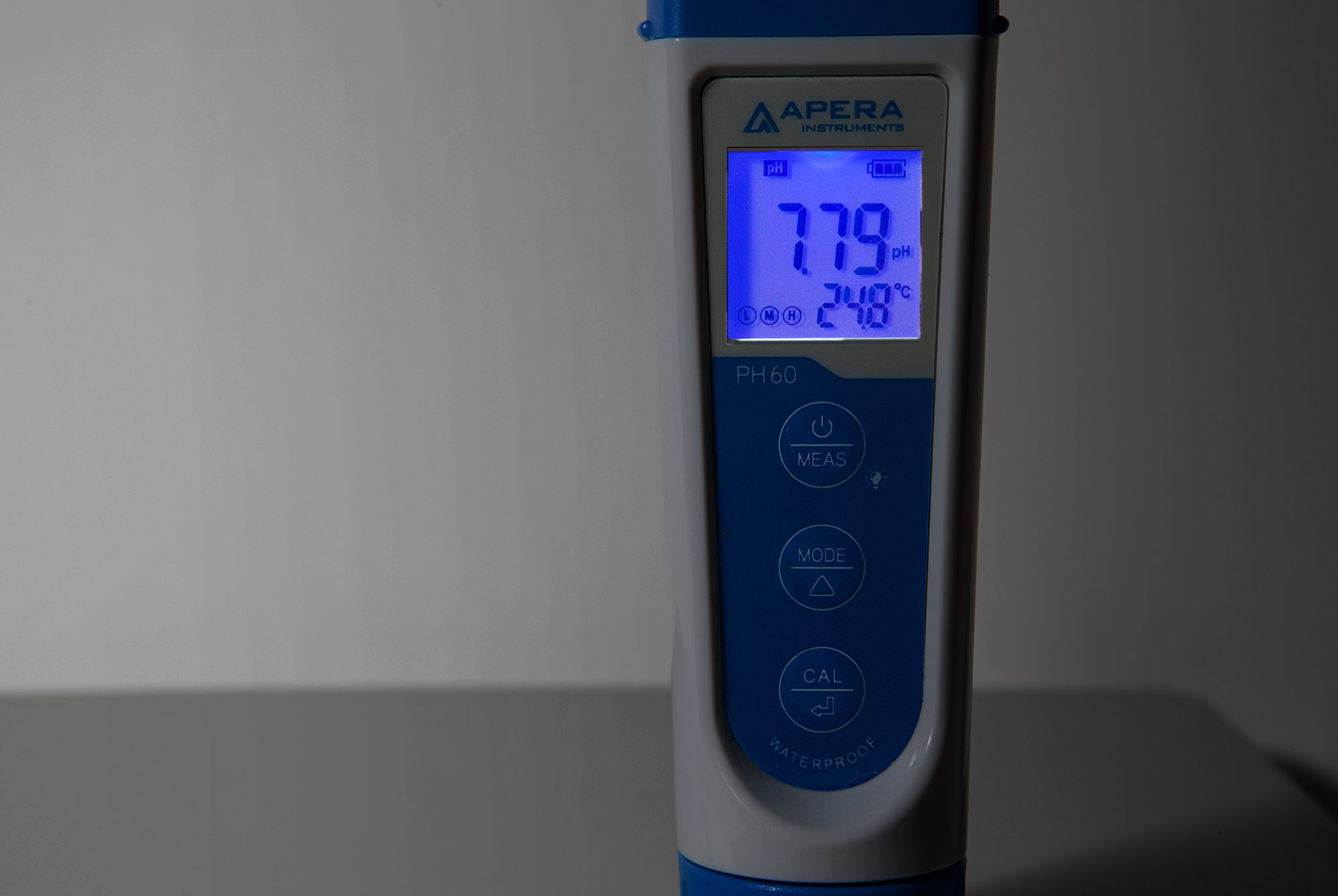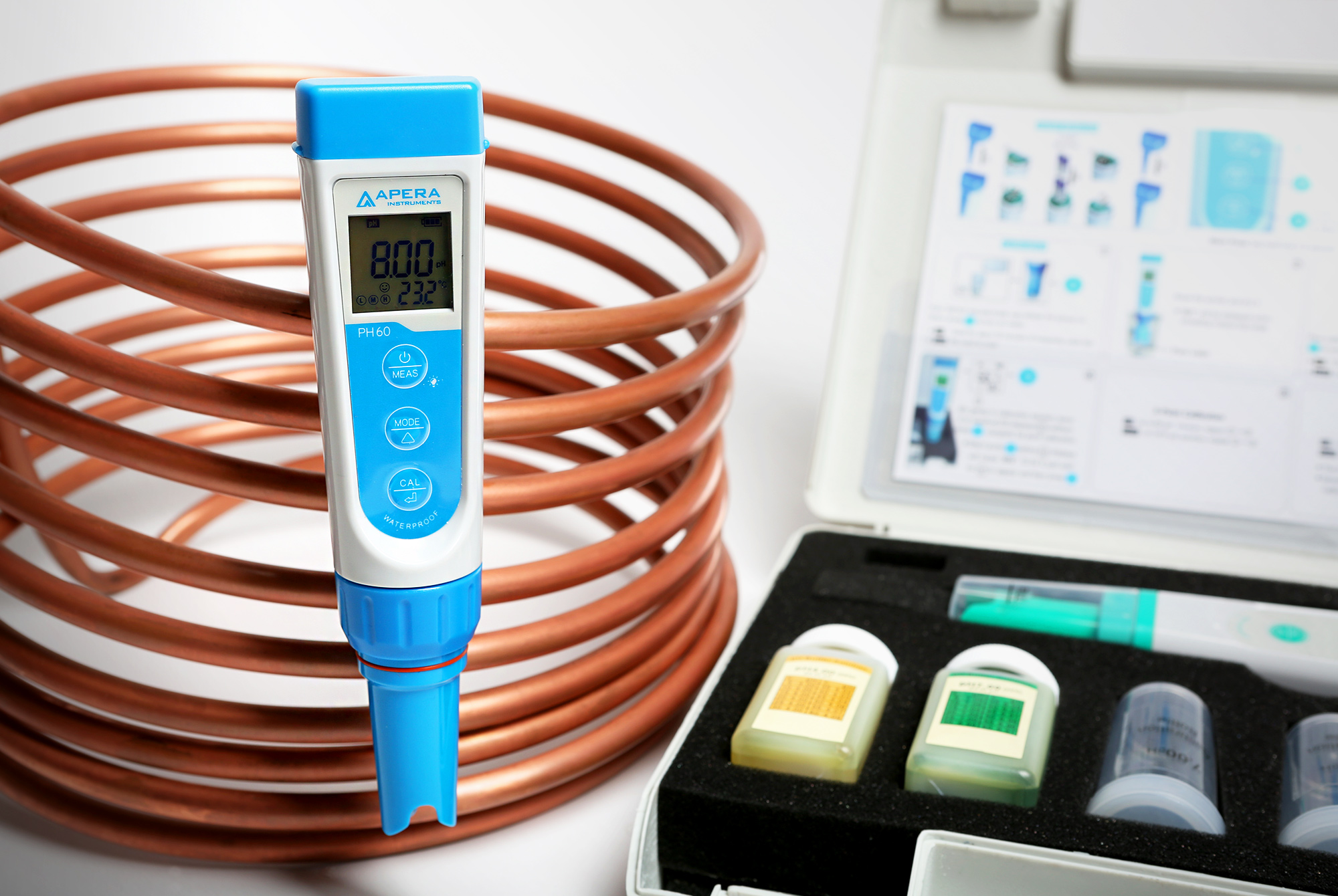Shop
Step Up Your Homebrewing Game With a pH Meter
Why pH is important to homebrewers, and how to test it.
When you start brewing your own beer, you brand yourself a garage tinkerer: every batch needs to better than the last, lest you become just another purveyor of bad brown ales. Improvement gets addicting. There are always new recipes and equipment to explore, more notes and tweaks to make. But for those looking to create truly great beer, the biggest strides start with the water.
“Most beer is 95 percent water,” says Marshall Schott, an experienced homebrewer and the founder of Brülosophy. “Guys like me have pH meters and consistently measure pH to check that our process and our water program is still spot on. If it’s a little off, it might be hard to go back to change it 15 mins [into the brew process], but at least we know that something is awry.”
Much has been written about pH and water chemistry, and those looking to get into the nitty gritty science should pick up the latest edition of John Palmer’s How to Brew. But for novices, understanding pH and water chemistry isn’t as difficult as the vocabulary indicates.
Homebrewers should periodically test the minerals that make up their brewing water — referred to as water chemistry. These reports summarize the water’s “ingredients.” Just as salt, sugar, and oil add varying flavors to food, water contains minerals that add flavor to the beer. Consider the soft water of Pilsen, Germany, which made Pilsner Urqell a worldwide name. Or look toward the high bicarbonate water of Dublin, which gives the Guinness its dry, highly-drinkable stout. This information, used in conjunction with a water report, gives homebrewers the tools to produce higher quality beer.
Why Care About pH
If minerals are the ingredients that add flavor, pH controls how that flavor is perceived. “The conventional wisdom is that a mash pH of 5.0-5.2 is pushing a crisper beer — you’d aim for that with a pilsner or IPA or pale ale,” says Marshall. “Once you get to a pH of 5.3-5.6, you might get more roundness and less of that tart character. But you also run the risk of extracting tannins.”
And pH is second only to temperature in impacting the enzyme activity of the mash. It must be manipulated in such a way as to convert all the starch in a mash, while also achieving the intended flavor profile.
How to Measure Mash pH
While pH can be measured using litmus paper — like in high school chemistry class — this method is too imprecise for homebrewers. Instead, one should use a pH tester. Our recommendation is the Apera PH60 ($89), which is accurate to ±0.01 pH — especially important for those looking to make sour beer, more on that later — and readable in any lighting. A great, more budget-conscience option is the Apera PH20 ($50), which is accurate to ±0.1 pH.
1. Calibrate the tester. After cleaning and soaking the bulb sensor, the pH tester should be calibrated using 2-point, or 3-point, calibration. The tester is placed in a solution of a known pH and adjusted as necessary.

A calibrated pH tester is necessary for accurate pH readings.
2. Take a sample and cool to room temperature. “My method is first putting a glass in the freezer,” says Marshall. “Then I’ll add grains to hot water, give it a stir and mash [saccharification rest] for about 10 minutes. My mash tun has a spigot [though a beer thief (shown below) can be used] and I’ll run off a little bit to purge, then I’ll pour a sample into the glass from my freezer. I’ll put it back in the freezer until the wort is about 70-80 degrees and pull out my pH meter to measure it.”

Measuring the pH of the mash.
3. Take notes. Write down the pH in order to compare across recipes and water profiles in order to tweak your process for the next brew day.
What pH are we Shooting for?
Certain styles call for specialized pH and brewing temperatures. However, while the consensus for optimal yield (ie. converting the most starch) hovers in the 5.5-5.8 range, most brewers will keep their pH in the 5.2-5.6 range, as that has proven to produce a clearer beer, with better flavor that doesn’t degrade as quickly over time.
“Nowadays a lot of homebrewers aim for 5.2-5.3. And that’s just for the mash pH on standard beer,” says Marhsall. “For finished beers, you’re typically looking at the 4.5-4.6 range, unless you’re making a kettle soured beer, which is really popular for homebrewers.”
For the exact pH, consult specific recipes.
A Note on Sour Beers
When people talk about extreme pH beers, they’re typically talking about sours. While homebrewers like Marshall will use the kettle sour method, in which a beer is soured and then inoculated with yeast, professional brewers do things a bit differently.
“We let the saison and Brett express themselves first,” says Mike Makris, the Cellar Manager at The Rare Barrel, a legendary sour brewery in California. Markis then takes a portion of that beer — called the base beer — and places it in a barrel with a mixed culture of bacteria that will produce a sour beer. The other portion, generally 30 percent of the batch, will continue to ferment without becoming sour.
“I like to use the analogy of a spice rack,” says Makris, referring to the barrel program at Rare Barrel. “We’ll take a look at these beers every 2 to 4 weeks, depending on what we’re aiming for. Each batch has roughly 18 barrels, and we’ll designate 2-4 from which to pull pH samples monthly.”
Once the sour beer is at an acceptable pH and taste level, Makris will combine sour and base beer for bottling. This holds especially true for dry-hopped sours. “If we are dry hopping a sour beer, we will do a two oak barrel blend of beers at a pH of 4.2 and 3.3. We’ll dry hop the 4.2 beer because it’ll give us that IPA aroma,” says Makris. Adding hops to a low pH beer will bring out the tannic or astringent hop qualities. “We want to avoid the pickled vegetable aroma.”
Pro tip for homebrewers: “In terms of blending sour beer, number 1 trust your palate, number 2 — and this is not the most feasible for homebrewers — have as much blending stock around as possible,” says Makris. “A lot of sour homebrewers might complete the primary fermentation and, instead of inoculating the entire batch with bacteria, will infect 3 gallons and leave 2 gallons uninfected so they can blend back back.” He then added a caution: “We’ve found that you can always add more acid, but you can’t take out acid.”

The Apera PH60 is readable in any lighting.
Conclusion
For more basic beers, pH readings allow homebrewers to better manipulate their water and construct the canvas onto which they’ll paint malt, hops, and yeast. And for sours, preplanning and constant pH testing allow brewers to achieve the results they want without adding phosphoric or lactic acid directly to the brew in order to decrease the pH and achieve an acidic taste. “Not to get on a high horse, but you can definitely taste when a brewer added phosphoric or lactic acid after the fact,” says Makris. “It’s a short cut to make a beer taste sour. But we want the flavors and the aromas to come from extended fermentation and yeast and bacteria. If acid is the focus, you need a pH meter.”
Marshall and other homebrewers rely on pH testers and a Bru’n water spreadsheet to continually tinker and fine-tune their process. “I use filtered tap water that I’ve had tested. I know what the variables are,” says Marhsall. “If I’m aiming for a pH of 5.2 and it comes out as pH 5.6 or 5.7, I can look more into it.”
Buy Now: $89 (PH60) Buy Now: $50 (PH20)
This post was produced in partnership with Apera Instruments.



